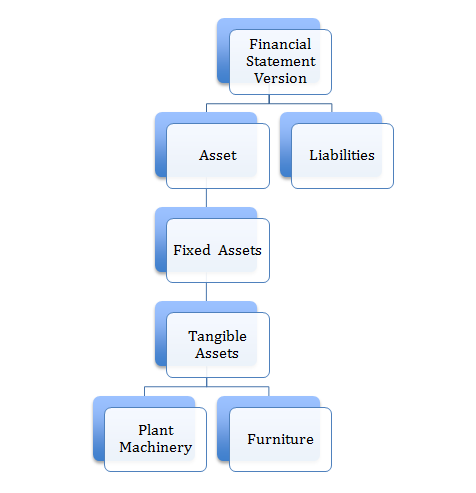The major activities of carrying out all the necessary activities in an organization through a system is to have all the information stored in a single platform and for information purposes. Like in FI reporting to create a financial statement and P& L is the most important and plays a crucial role for Internal and External Reporting requirements.
Let us understand how are financial statements created through SAP. The Financial Statement and P & L Account Statement can be created in SAP. For creation of the Financial, certain configuration and mapping needs to be done in the system.
The business is growing rapidly and there can be multiple ways in which we would require our Financials to be derived. Group companies need group financial Statement, Companies in different countries require Country specific Financial Statement as per the Accounting Principle Followed, the currency, the language and so on.
Sap facilitates these above requirements where we can derive different Financial Statement and P & L Statement from the system.
Steps to be taken for configuring Financial Statement Version:
1. Define a Financial Statement Version (FSV)
2. Create Hierarchy Levels
3. Assign Accounts
What is a Financial Statement Version?
As per the internal and external requirement of reporting our Balance sheet and P & L we can decide how many financial Statement Version are required for an Enterprise. The following question can help us decide the various versions to be created. The system allows creation of as many FSV required. Creating multiple FSVs can produce different outputs.
- Who is interested in FSV:
D. Financials As per IFRS – FSV IFRS
E. Financials As per US GAAP – FSV US01
F. Financials As per Tax Authorities – FSV TX01
FSVs are also used in structured balance list, drilldown reporting, planning and transferring data for consolidation.
The FSV enables to configure the report format. You determine the following:
- Which items are to be included and the sequence and hierarchy of these items.
- The text describing the items.
- The Chart of Accounts and the relevant Accounts relevant for the report.
- The totals to be displayed.
As per ECC 6.0 with Document splitting we can derive FSVs on segment level, Profit center level, Business Area level on real time basis.
The FSV can be defined in two steps:
- Enter it in the FSV directory
- Define hierarchy levels and Assign Accounts.
Each Version must have the below heads ‘Special Items’
- Profit and Loss results.
- Accounts not assigned.
- Notes to Financial Statement.
A FSV can have a maximum of 20 hierarchy levels.
- Assign items to each level.
- Assign Texts to each item.
- Assign the accounts whose balance and account name are to be listed to the lowest level.
For example
The GL Accounts (including Reconciliation Accounts) are assigned to the lowest level of the hierarchy where the Account balance needs to be displayed. Instead of Multiple GL Accounts, Account Group can also be assigned to the level.
A 4 liner additional text is allowed to be written at the beginning and the end of every item in the FSV
Let Us take an example to understand the assigning of the Accounts with Debit Balance or Credit Balance in the FSV. For Bank Balance for a bank account the company might have overdraft. Now this is a dynamic scenario depending on the balance on the key date the FSV is extracted. So for the Bank Balance we will assign the GL account fewer than two heads Overdraft under the Liabilities and Bank debit Balance under the Asset side. The Settings for the system to understand this scenario is to do the below settings:
| D | C |
| X |
The Account should show under a particular head only if the balance has a Debit Balance.
| D | C |
| X |
The Account should show under a particular head only if the balance has a Debit Balance
| D | C |
| X | X |
The item should show under a particular head, whether the Account has a debit balance or a credit balance.
The Profit and Loss statement is also derived in the same manner as the Balance sheet.













